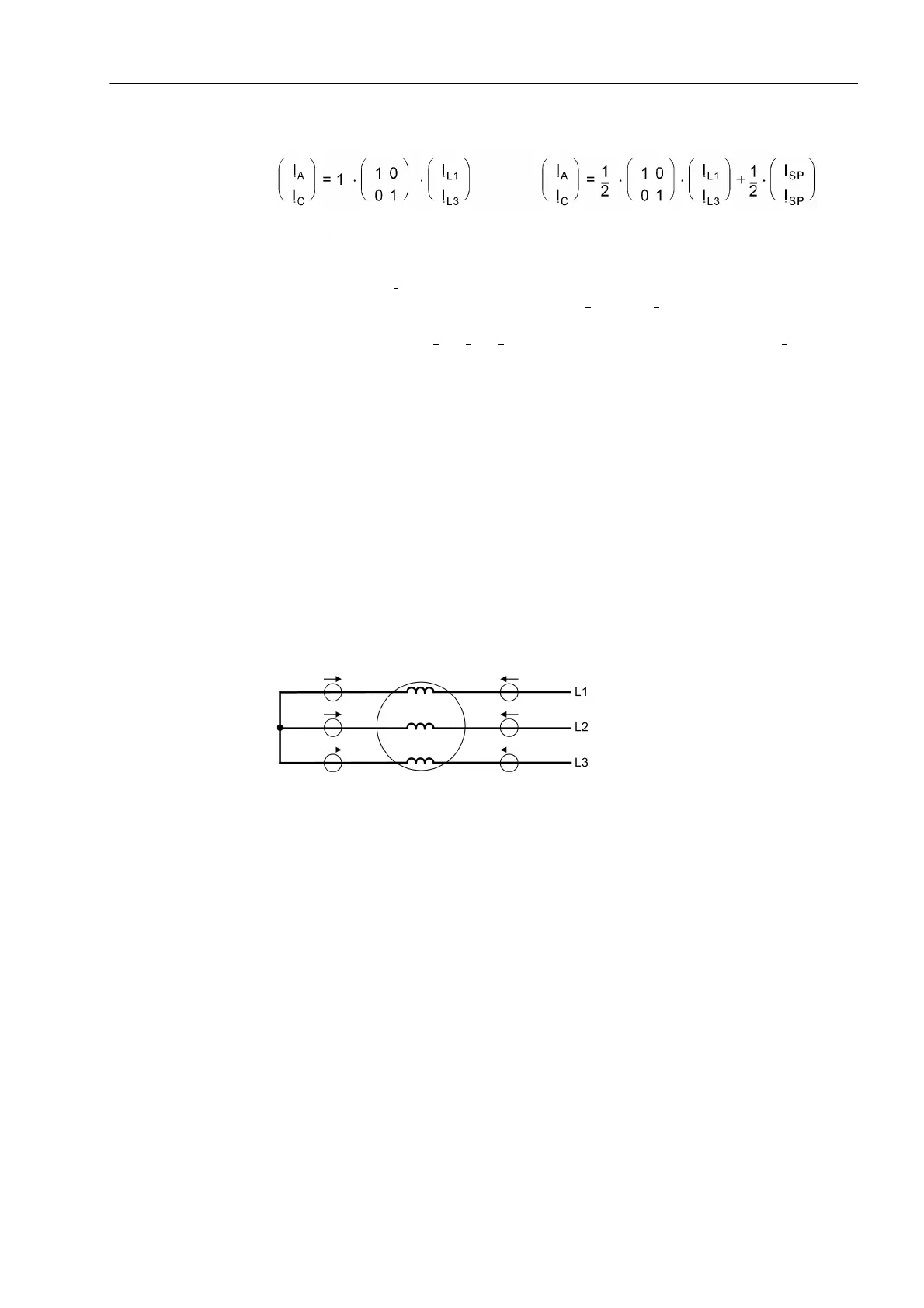2.2 Differential Protection
121
7UT613/63x Manual
C53000-G1176-C160-2
The matrix equation in this cases is as follows:
Where I
Sp
is the current measured in the „Starpoint“ connection.
The zero sequence current is not eliminated. Instead of this, for each phase half of the
starpoint current I
SP
is added. The effect is that the zero sequence current is consid-
ered in case of an internal ground fault (from I
0
= –
1
/
2
· I
Sp
), whilst the zero sequence
current is eliminated in case of an external fault because the zero sequence current
on the terminal side 2 · I
0
= (I
L1
+ I
L3
) compensates for the starpoint current I
Sp
. Almost
full sensitivity (with zero sequence current) is thus achieved for internal earth faults
and full elimination of the zero sequence current in case of external earth faults.
Even higher earth fault sensitivity during internal earth fault is possible by means of
the restricted earth fault protection (section 2.3).
2.2.3 Differential Protection for Generators, Motors, and Series Reactors
Matching of the
Measured Values
Equal conditions apply for generators, motors, and series reactors. The protected
zone is limited by the sets of current transformers at each side of the protected object.
On generators and motors, the CT are installed in starpoint connection at the terminal
side. Since the current direction is normally defined as positive in the direction of the
protected object, for differential protection schemes, the definitions shown in figure
2-36 apply.
Figure 2-36 Definition of current direction with longitudinal differential protection
The differential protection in 7UT613/63x refers all currents to the rated current of the
protected object. The device is informed about the rated machine data during setting:
the rated apparent power, the rated voltage, and the rated currents of the current
transformers. Measured value matching is therefore reduced to magnitude factors.
Transverse Differ-
ential Protection
The use as transverse differential protection involves a special point. For this applica-
tion, the definition of the current direction is shown in figure 2-37.
For transverse differential protection, the phases connected in parallel constitute the
border between the protected zone and the network. A differential current appears in
this case only, but always, if there is a current difference within the particular parallel
phases so that a fault current in one phase can be assumed.

